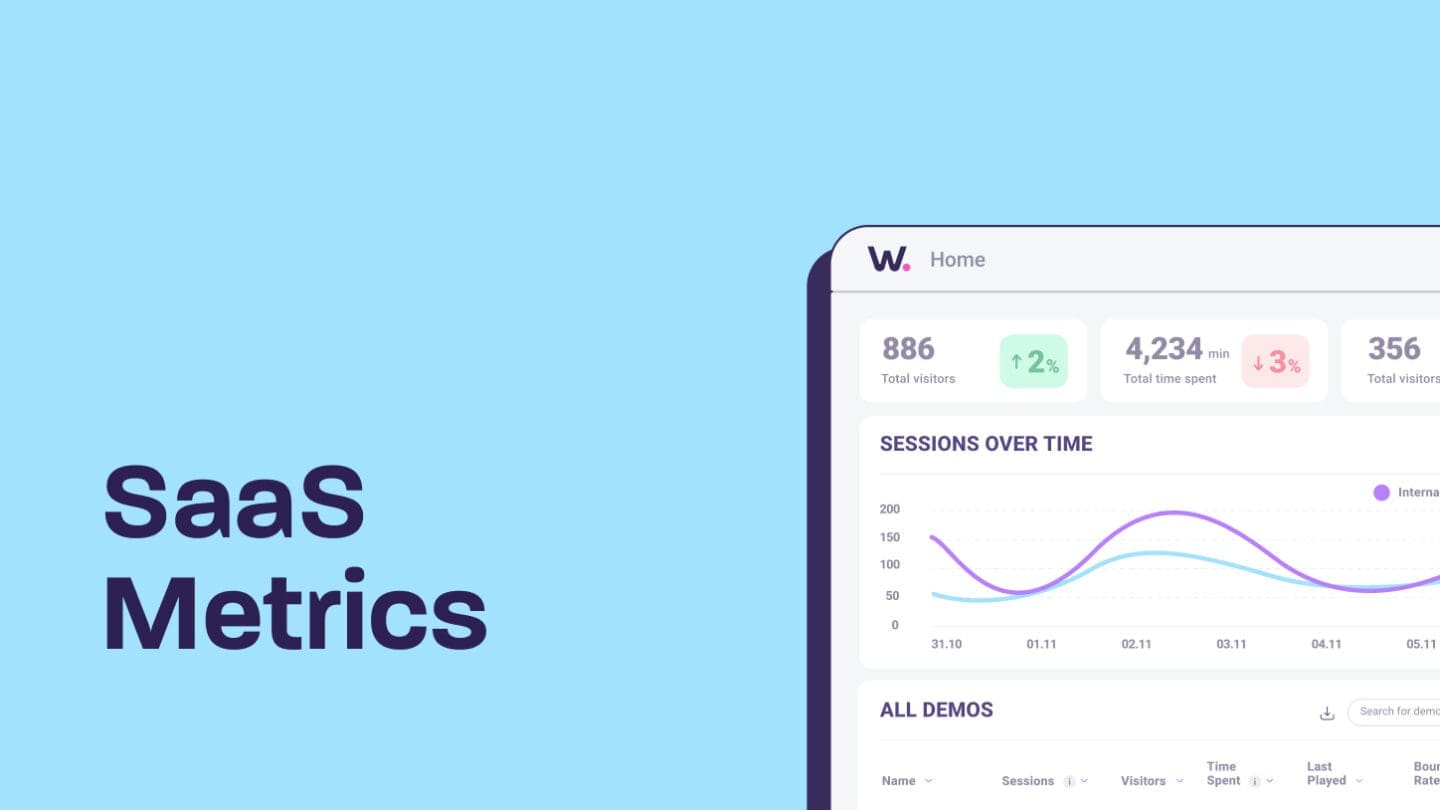There’s a light at the end of the funnel.
(Sorry about our lame puns.)
But in all seriousness, building a successful B2B sales funnel is crucial for SaaS companies aiming to convert leads into loyal users.
This journey that is the sales funnel is designed to guide prospects through the decision-making phases, with the ultimate goal being a closed deal.
With this in mind, join us as we explore everything you need to know about the B2B sales funnel.
- What is a B2B sales funnel?
- Why is a sales funnel important for SaaS companies?
- What is the difference between a B2B and B2C sales funnel?
- What’s the difference between a B2B sales funnel and a B2B sales pipeline?
- The stages of the B2B sales funnel
- Awareness
- Interest
- Desire (or evaluation)
- Engagement
- Action
- How to build a B2B sales funnel
- Focus on customer demands
- Ensure ease of communication with prospects
- Keep in touch with customers and prospects
- Organize sales operations
- Align sales and marketing teams
- Boost your sales funnel using interactive product demos
Try Walnut’s interactive sales demos for your sales funnel >
What is a B2B sales funnel?
Now before we go any further, let’s start by talking about what the B2B funnel even is in the first place.
At its core, the B2B sales funnel is the series of steps that buyers go through when they purchase a SaaS product, with the end goal being to convert leads into paying customers.
Think of it as the narrative arc in your favorite series, where characters progress through various stages of development. Similarly, the B2B sales funnel stages—Awareness, Interest, Desire, Action (AIDA)—represent a journey for your prospects.
Unlike a linear plot, however, this journey allows for dynamic movements within the funnel, with prospects sometimes advancing or retracing their steps based on their evolving needs and your strategy.
That being said, getting it right isn’t easy and requires significant testing to be able to optimize your funnel. But if you can build a successful B2B sales funnel, it will put you on the path toward maximizing ROI and achieving stellar customer acquisition.
Why is a sales funnel important for SaaS companies?
For SaaS companies, navigating the B2B marketplace without a well-structured B2B sales funnel is like setting sail without a map.
This strategic framework is not just a pathway, but a compass, guiding potential clients through the intricate journey from awareness to purchase. A well-built B2B funnel acknowledges that demonstrating a product’s capabilities is only impactful when prospects are convinced of its ability to alleviate their specific pain points.
The funnel serves as a dynamic blueprint, allowing SaaS marketers to tailor interactions based on deep understanding and empathy towards potential customers’ challenges. This approach significantly enhances conversion rates, transforming casual browsers into engaged prospects.
Beyond the immediate goal of conversion, the sales funnel plays a pivotal role in customer retention, ensuring that clients remain engaged and satisfied over time.
By leveraging detailed insights from each funnel stage, SaaS companies can refine their pricing strategies, create compelling landing pages, and foster a culture of continuous referrals, thereby securing a steady stream of recurring revenue.
Ultimately, a robust B2B sales funnel is not just a tool for customer acquisition, but also a cornerstone for sustainable growth and customer satisfaction.
What is the difference between a B2B and B2C sales funnel?
When it comes to B2B and B2C funnels, they are totally different worlds, with each having its unique challenges and intricacies.
The B2B sales funnel is characterized by longer sales cycles, necessitating a deeper engagement through stages and requiring resources like case studies, whitepapers, product demos, and personalized consultations.
Meanwhile, the B2C sales funnel is more streamlined, focusing on capturing consumer interest swiftly and moving them towards a purchase with fewer stages. Emotional appeals, instant offers, and straightforward product benefits are the hallmarks of B2C, designed to convert consumers rapidly.
The complexity of B2B funnels comes from the need to address multiple stakeholders within an organization, each with their unique concerns and decision-making criteria.
In addition, unlike B2C sales funnels, you need to create detailed product comparisons, educational content to inform and engage professional audiences, and tailored solutions that speak directly to the specific business needs of your prospects.
In essence, while both funnels aim to guide potential customers from awareness to action, the B2B funnel does so with a meticulous, consultative approach, reflecting the higher stakes and longer commitment expected in software purchases.
On the other hand, the B2C funnel caters to individual consumers’ desire for quick transactions, making the buying journey as seamless as possible.
What’s the difference between a B2B sales funnel and a B2B sales pipeline?
While pipeline and funnel might seem like interchangeable terms in the lexicon of sales strategy, their differences are distinct.
A B2B sales funnel maps out the journey of the buyer, from the initial awareness to the moment when they take the plunge and purchase your product.
Meanwhile, the B2B sales pipeline is the visual representation of your prospects and where they are in the sales process. In addition, when we talk about pipeline generation strategy, we mean the approach you take to the process of building and maintaining a consistent stream of prospects that are interested in buying your product.
The stages of the B2B sales funnel
Now, let’s go through all the different stages of the B2B sales funnel.
Remember, each funnel stage will require unique assets to provide buyers value based on where they are in the buying journey.
1. Awareness
In this first phase of the buying process, potential customers encounter a challenge or desire, which prompts them to search for a solution.
Whether by chance or through targeted marketing campaigns, they stumble upon your brand.
Prospects can also find out about your company by doing research on related topics. And to gain visibility here, you can invest in PPC, SEO, social media marketing, and inbound marketing.
2. Interest
Now that you’ve piqued their interest, prospects will dive deeper, seeking out resources to understand potential solutions.
This stage is where interest in your solution grows, yet the focus remains on the broader quest for answers. They are looking for answers regarding more general questions like why they need a solution to their problems.
Essentially, prospects transition from being aware of their pain points to aware of potential solutions.
3. Desire (or evaluation)
At this point, prospects critically assess your offering against others, weighing its merits and fit for their needs.
This is where your narrative must shine, presenting compelling arguments and showcasing the value of your solution.
To be successful in this phase of the funnel, you need to build a relationship with your prospects to understand what their specific needs and goals are. In addition, you need to share relevant content with them to help create trust, gain credibility, and add value.
4. Engagement
The engagement stage is a continuation of the desire phase and is where direct interaction with your sales team occurs, transforming abstract interest into concrete consideration.
In this stage, your team will qualify your lead to make sure you’re not wasting your time pursuing prospects that are never going to buy your product.
After your lead has been qualified, you’ll want to work on forging a personal connection, building trust and highlighting the unique benefits of your solution.
To get the job done here, you need to show how your product will meet the prospect’s specific needs, as well as go over how the implementation and onboarding processes work.
5. Action
This is where decisions are made and commitments are forged.
In this stage, the journey culminates in the purchase, marking the transition from prospect to customer. And now, it is time to deliver everything you promised the prospect.
Because let’s face it, even though someone made a purchase, it doesn’t mean they’ll stay with your brand for the long haul. That’s why you need to invest in providing product onboarding materials, customer support calls, as well as events and webinars to make sure your customer retention is strong.
How to build a B2B sales funnel
Creating a successful B2B sales funnel requires precision, understanding, and continuous refinement.
With this in mind, here’s a breakdown of the essential steps to design your B2B sales funnel for maximum efficiency and growth.
1. Focus on customer demands
Understanding the core needs and demands of your customers is the foundation upon which the entire B2B funnel is built.
Begin by mining data from social media interactions, website analytics, and direct feedback through surveys or interviews.
This insight allows you to tailor your funnel to address specific pain points, ensuring your messaging resonates with your audience. This step allows you to start with the best possible base for your strategy.
2. Ensure ease of communication with prospects
A B2B sales funnel thrives on clear and open channels of communication.
From the initial awareness stage through to engagement and purchase, make it easy for prospects to find the information they need.
This might mean optimizing your website for FAQs, offering live chat support, or ensuring your sales team is readily available for calls or demos.
3. Keep in touch with customers and prospects
The relationship with your customers doesn’t end with a sale.
Continuous engagement through follow-ups, newsletters, and personalized offers keeps your brand top of mind and encourages loyalty. This stage is about cultivating a blooming relationship that can yield referrals and repeat business.
4. Organize sales operations
Efficient sales operations are the backbone of a successful B2B sales funnel.
Utilize CRM systems to streamline lead tracking, automate follow-ups, and maintain a clean and organized database.
5. Align sales and marketing teams
The synergy between sales and marketing is crucial for funnel optimization.
Both teams should be aligned on goals, messaging, and target audiences, working together to guide prospects through the funnel. Think of this as a relay race where both runners are perfectly in sync, passing the baton smoothly to win the race.
Boost your sales funnel using interactive product demos
It’s plain and simple. A well-structured sales funnel is indispensable when it comes to taking your SaaS company to the next level.
And one way to provide value throughout the sales funnel is to use interactive demos. That is, of course, if you use a demo platform like Walnut.
Walnut is the only full-funnel demo platform that allows you to create, share, and analyze interactive demos at any point during the B2B sales funnel.



